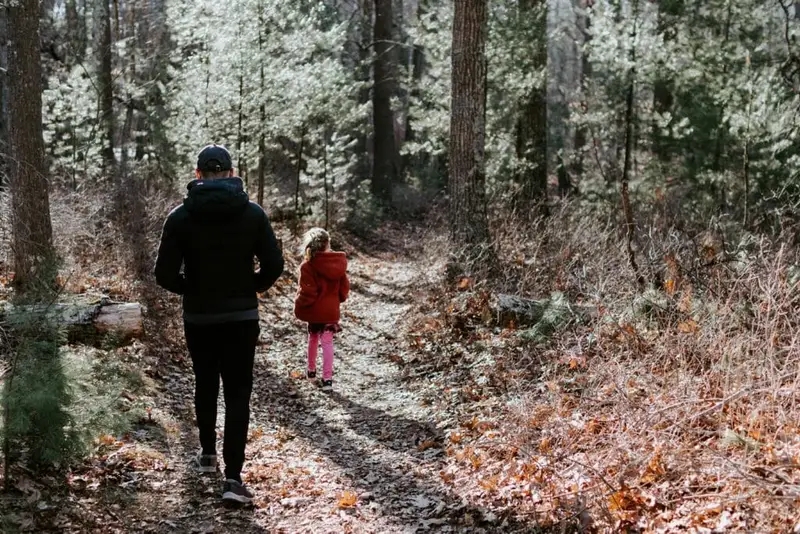1. Space Hoppers
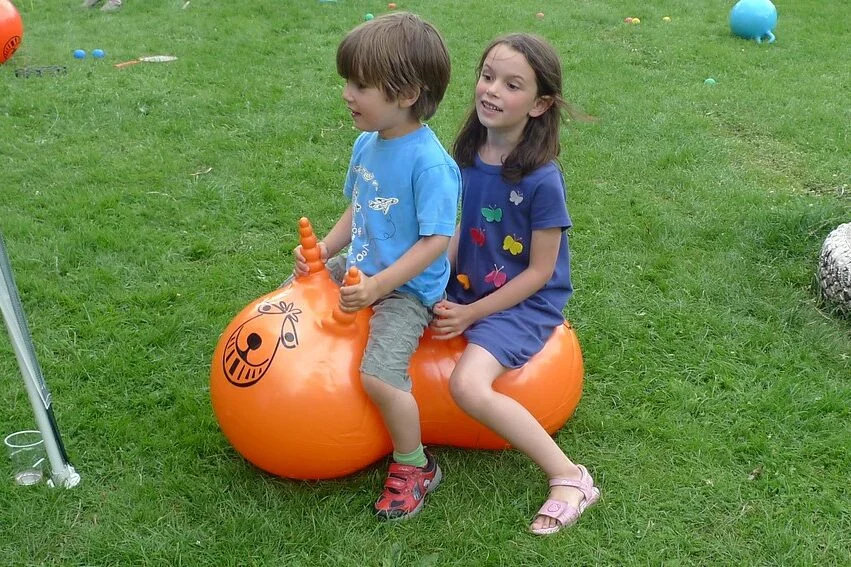
If you grew up in the ’70s, you probably remember the giant inflatable balls with handles called Space Hoppers. These bright orange or neon-colored toys let kids bounce around the yard with wild abandon. They were basically exercise balls before gyms made them trendy, and kids loved racing each other across lawns. They made that distinctive squeaky rubber sound that was just as memorable as the wild ride itself.
While Space Hoppers were fun, they weren’t the safest thing in the world. Kids were constantly tumbling off or getting tangled in the handles, and parents eventually caught on. By the time the ’80s rolled around, they started fading from playgrounds, replaced by bikes, skateboards, and less injury-prone rides. Still, they remain one of those unforgettable staples of ’70s backyards that you don’t see much anymore.
2. Clackers
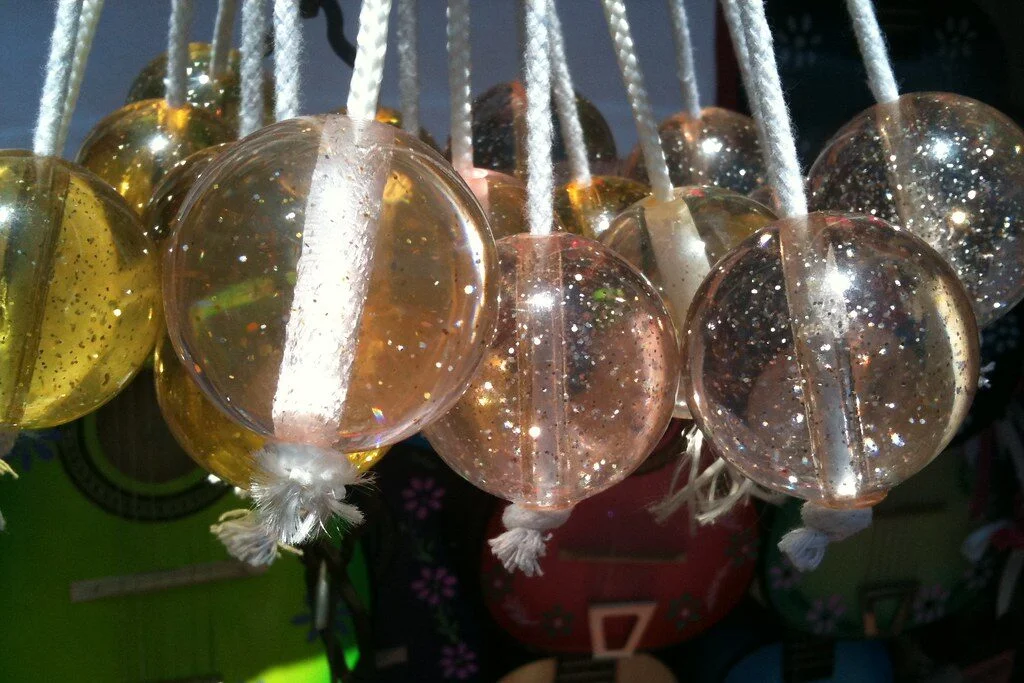
Clackers were two hard acrylic balls on a string that you’d swing up and down until they smacked together. The challenge was to keep them going without smashing your knuckles or face, which happened more often than parents liked to admit. They came in bright colors, sometimes clear with glitter inside, and were one of the biggest toy crazes of the early ’70s.
The problem was they were dangerously easy to break. When they did, the balls would sometimes shatter into sharp pieces that could cause nasty cuts. Add the constant clacking noise echoing through households, and it wasn’t long before schools and parents banned them altogether. They disappeared as fast as they came, leaving behind a generation with bruised wrists and fun memories.
3. Weebles Haunted House
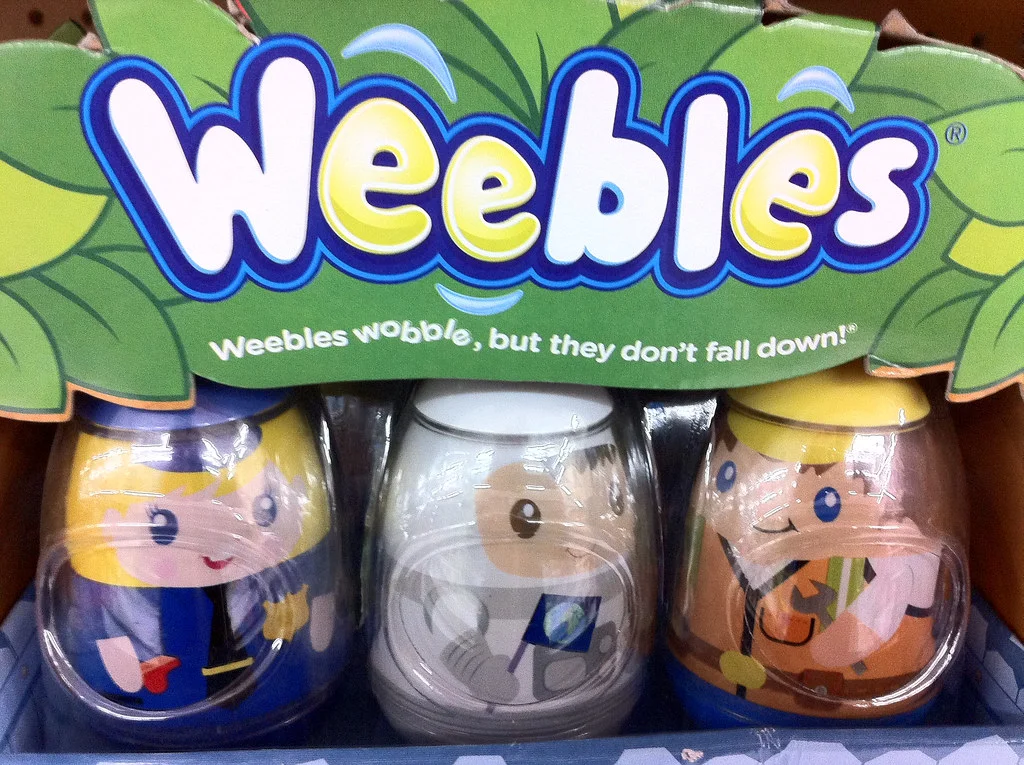
Weebles were marketed with the famous slogan, “Weebles wobble but they don’t fall down.” The Haunted House set was a standout, with a spooky exterior, trapdoors, and ghostly Weebles figures that fit perfectly into the Halloween-loving vibe of the decade. It was a hit with kids who wanted something a little eerie mixed in with their usual playtime.
But unlike the more generic Weeble playsets, the Haunted House had limited appeal. Once the Halloween season passed, it didn’t have the staying power of a castle or barnyard. Parents often packed it away with the decorations, and eventually it just stopped being produced. Today it’s a rare collector’s item that many remember but few actually held onto.
4. Incredible Edibles
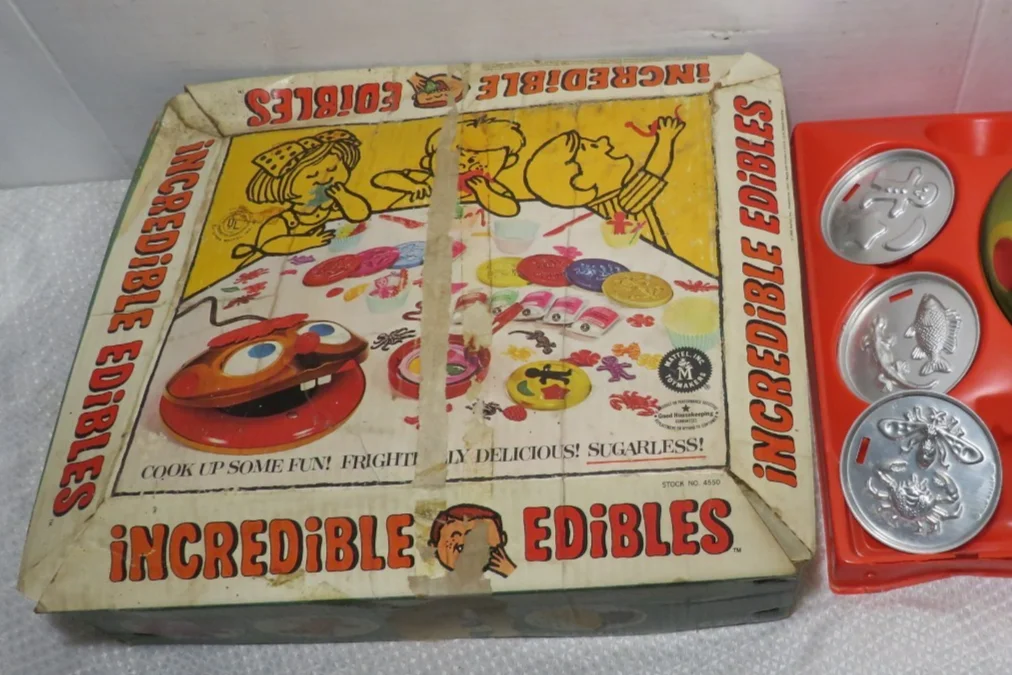
This was one of those toys that blurred the line between cooking and science experiments. Incredible Edibles came with molds, a heating element, and a special goo that you’d squirt into the shapes to make gummy-like candies. Kids could make bugs, flowers, or weird little creatures, and then actually eat them when they cooled.
As fun as it was, it had a few problems. First, the heating plate could get pretty hot, and many kids burned their fingers. Second, the “goo” didn’t exactly taste great—it was more of a novelty than a treat. Parents started to question whether letting kids cook their own candy with a hot plate was really a good idea, and eventually the toy quietly disappeared.
5. Stretch Armstrong Knockoffs
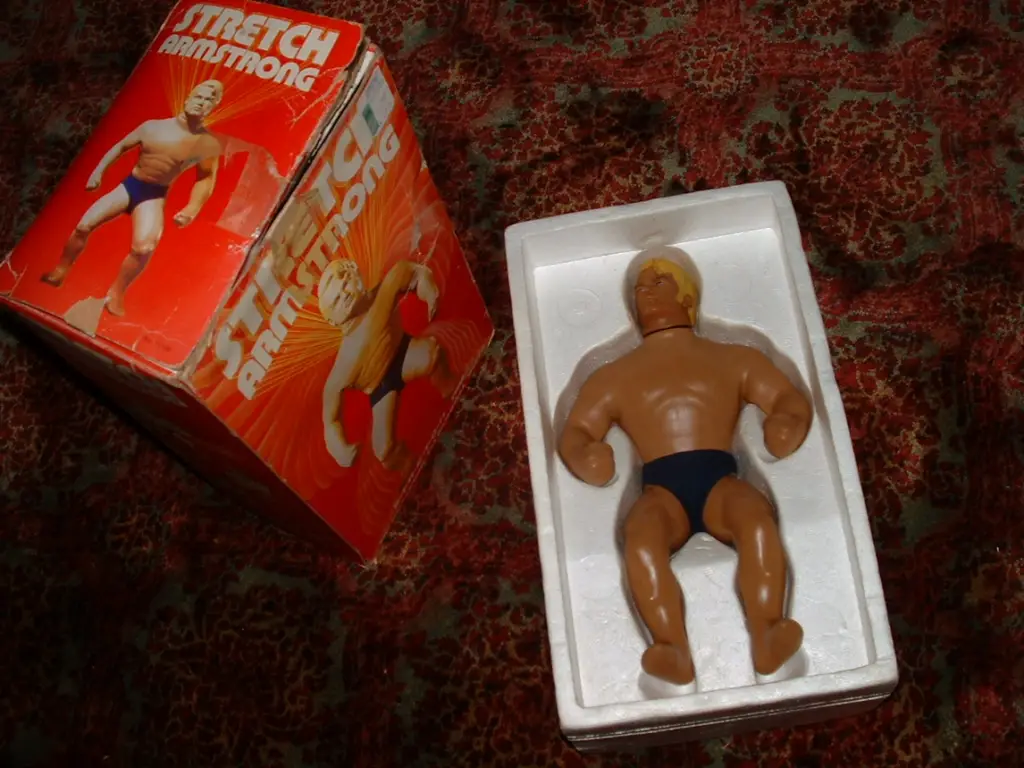
Stretch Armstrong was one of the most popular toys of the late ’70s, but what’s often forgotten are the knockoffs that followed. There were stretchy monsters, superheroes, and animals that promised the same kind of fun. They were filled with strange gel-like substances that let you stretch their arms and legs to wild proportions.
The problem was they didn’t hold up well. Knockoff versions often broke open, spilling sticky, corn-syrup-like goo everywhere. Parents quickly learned to be wary of these imitations, and even Stretch Armstrong himself had durability issues over time. As toy trends moved on, these stretchy figures faded away, leaving behind sticky carpet stains as their legacy.
6. Mattel VertiBird
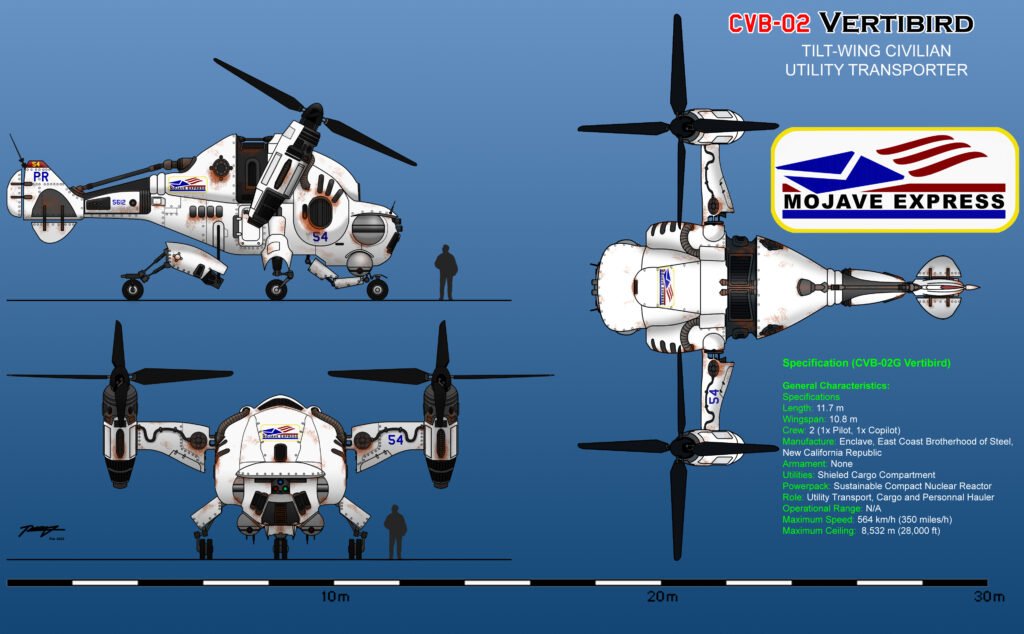
The VertiBird was a tiny helicopter that flew in circles on a tether attached to a base. You could control its altitude and speed, making it hover, land, or swoop around obstacles. For many kids, it was the closest thing to flying their own aircraft in the backyard.
It was a marvel for its time, but it had limits. The wire tether meant the helicopter could only circle endlessly, which lost its charm after a while. Plus, the plastic helicopters often crashed hard and broke. It was innovative, but once remote-controlled toys became more advanced, the VertiBird quickly felt outdated.
7. SSP Smash-Up Derby
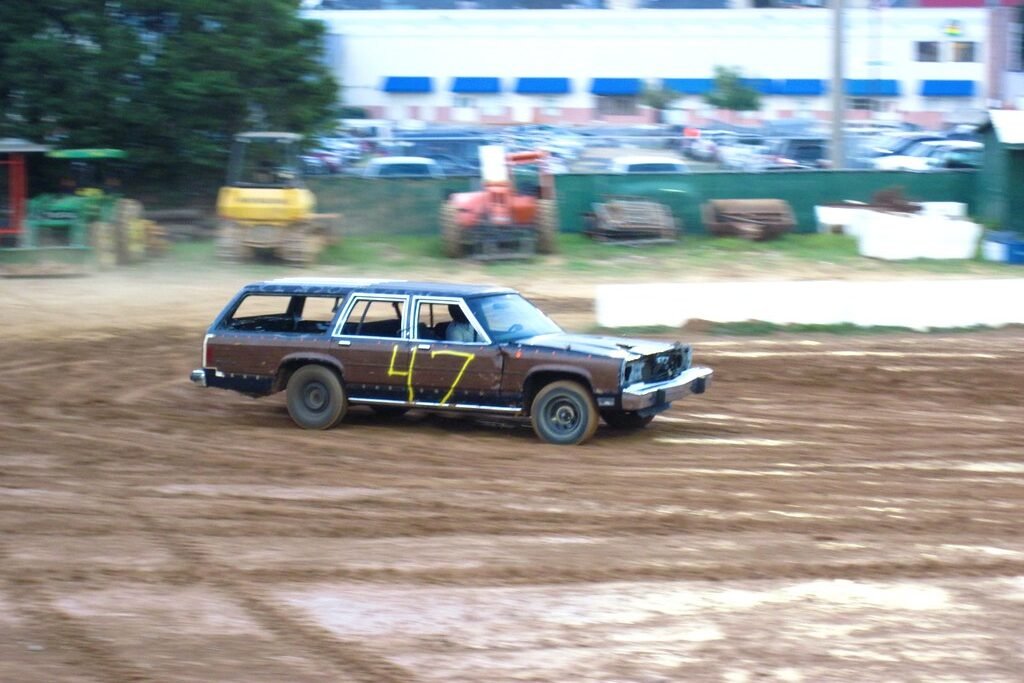
This set came with two plastic cars powered by a ripcord, designed to crash dramatically into each other. When they collided, the doors, hoods, and bumpers would fly off, only to be snapped back together for the next round. Kids could spend hours recreating their own demolition derbies.
While fun, it wasn’t the kind of toy that had long-term appeal. Once the novelty of crashing wore off, the cars often ended up collecting dust. Pieces also tended to get lost under couches or swallowed up by vacuum cleaners. It was exciting while it lasted, but it vanished almost as quickly as it arrived.
8. Shrinky Dinks
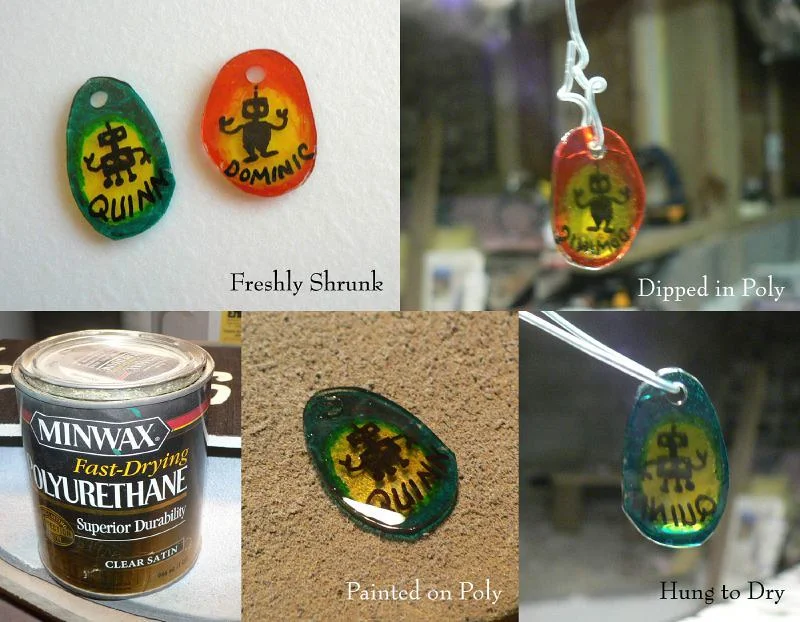
Shrinky Dinks were sheets of plastic that kids could color, cut out, and then shrink in the oven. They’d curl up and harden into small, sturdy charms or decorations. It was a perfect rainy-day activity, and the shrinking process was mesmerizing to watch.
The downside was that it required oven use, which made parents nervous. Between the potential for burns and the smell of heated plastic, it wasn’t the most practical pastime. While still around in niche craft kits, Shrinky Dinks as a mainstream toy faded by the ’80s. They remain one of those nostalgic activities everyone remembers but few still do.
9. Big Wheel with Spark Bar
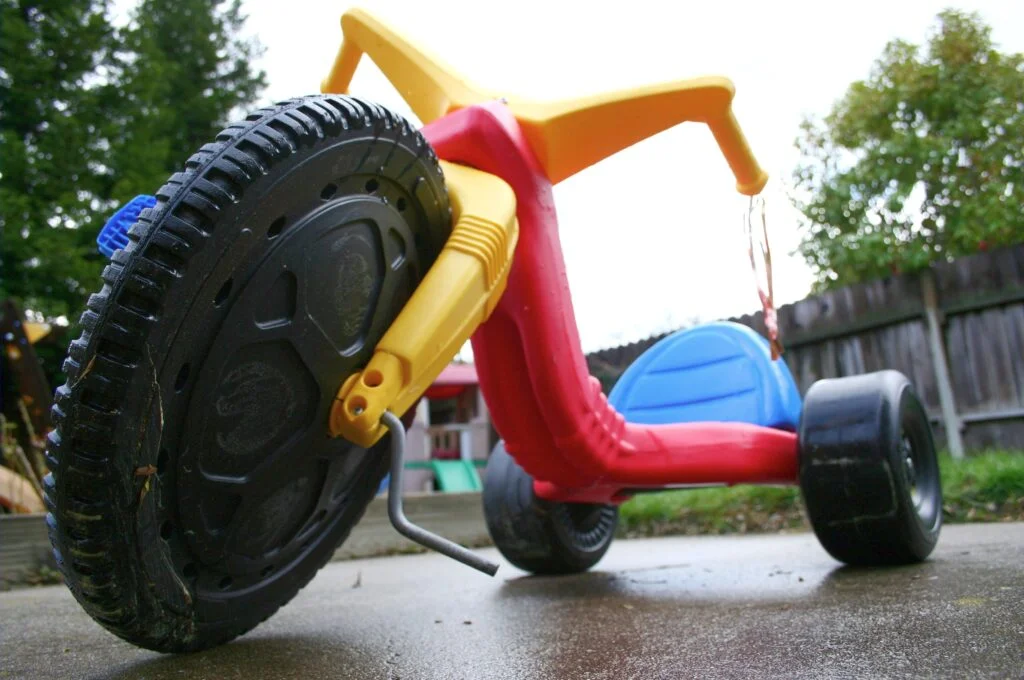
Every kid in the ’70s either had a Big Wheel or desperately wanted one. The version with the spark bar made it extra exciting—it scraped against the ground when kids spun out, sending sparks flying behind them. It gave an already thrilling toy an edge of danger.
Naturally, it didn’t last long. Parents and safety watchdogs weren’t thrilled with kids essentially setting off tiny firework-like sparks in the driveway. The spark bar models were phased out, and safer versions stuck around. But ask anyone who had one, and they’ll tell you it was the coolest Big Wheel on the block.
10. Lite-Brite Knockoffs
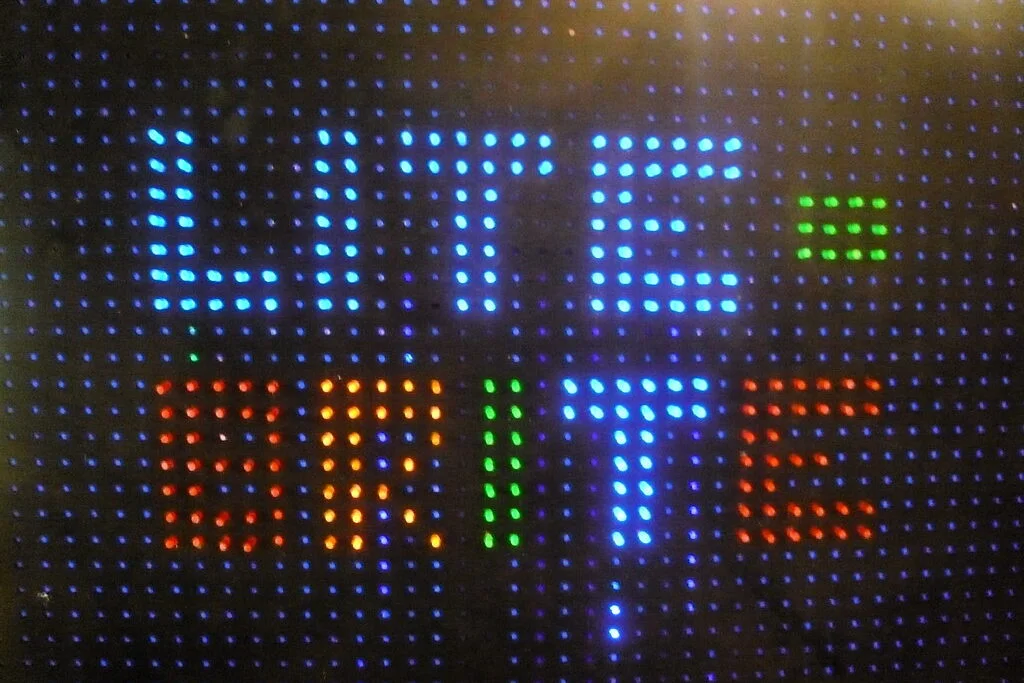
Lite-Brite itself stuck around, but the many copycat versions that flooded toy shelves in the ’70s didn’t. These cheaper versions had pegboards and lights that weren’t quite as bright or sturdy. Still, kids enjoyed making glowing pictures, whether the brand was official or not.
The problem was that knockoffs often overheated or had bulbs that burned out too quickly. Some weren’t even safe for long use. As parents gravitated toward the original Lite-Brite or moved on to new electronic toys, these cheaper imitations disappeared without fanfare. Today, only the name-brand survived the test of time.
11. Fisher-Price Adventure People
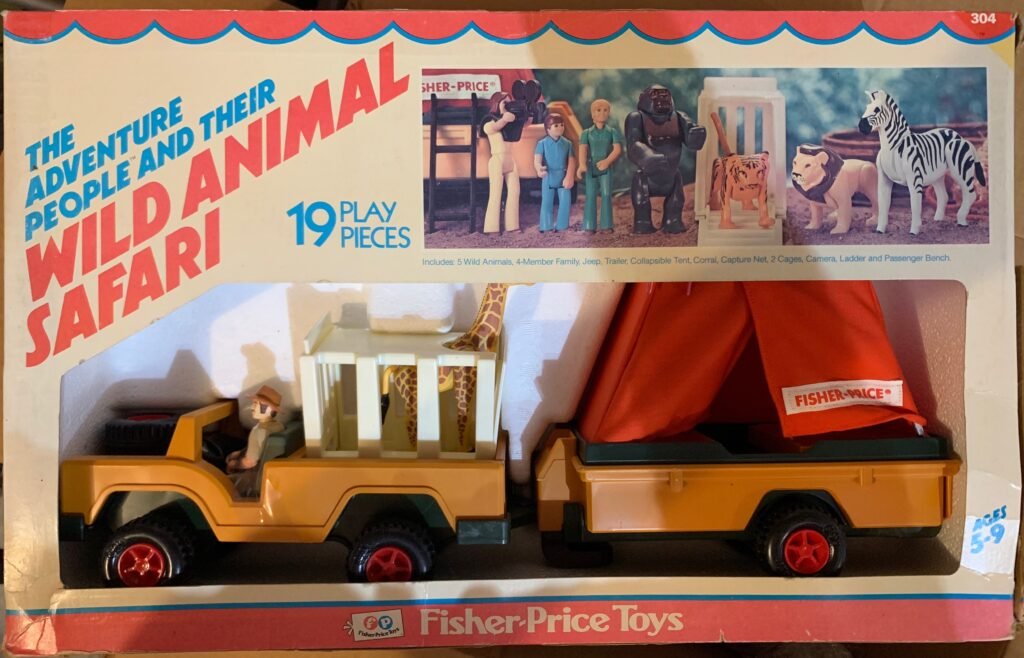
Before action figures were all about superheroes, there were Fisher-Price Adventure People. These were rugged little figures representing campers, astronauts, scuba divers, and explorers. They came with jeeps, kayaks, and tents, encouraging imaginative outdoor-themed play.
But once Star Wars toys hit the scene in 1977, kids’ tastes shifted dramatically. Realistic adventurers seemed dull compared to lightsabers and spaceships. Fisher-Price kept making them for a while, but they slowly vanished as kids demanded more movie tie-ins. Today they’re a fun retro find but not a household name like action figures from other franchises.
12. Kenner Tree Tots Family
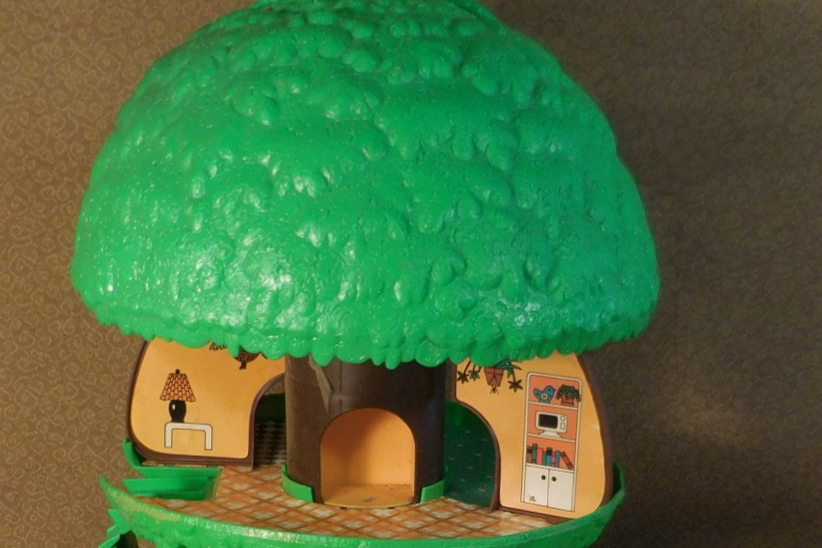
This toy featured a treehouse that opened up to reveal a family living inside. With little furniture and play areas, it was a cozy, imaginative set. The round figures were simple, but kids loved creating stories about their lives in the tree.
It was charming, but it didn’t compete well against bigger, flashier dollhouses or action figure sets. Once the novelty wore off, it often ended up in toy bins and garage sales. It quietly disappeared, remembered only by the kids who spent hours creating tiny treehouse adventures.
13. Wizzzer Tops
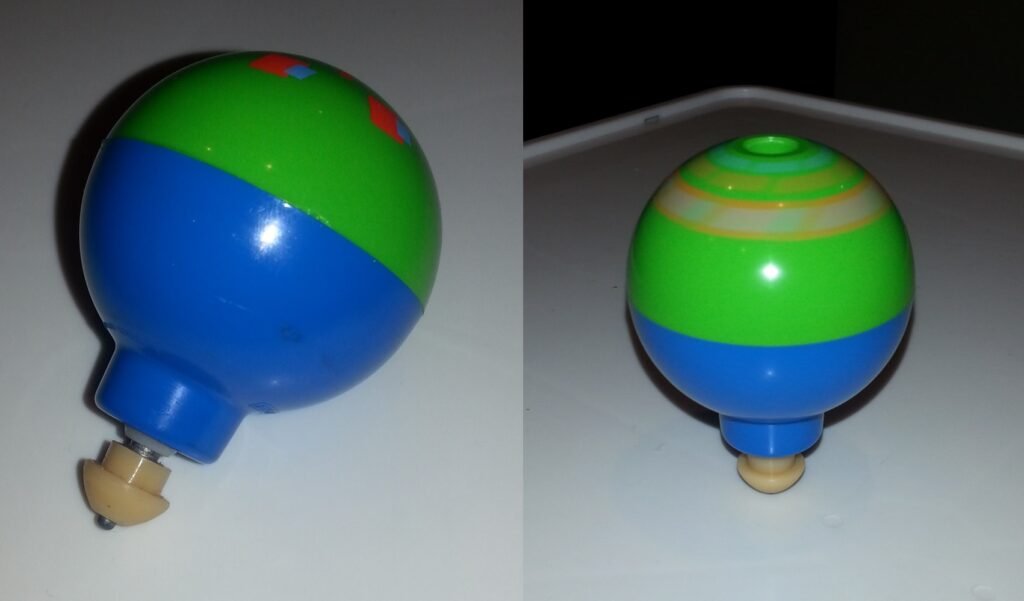
Wizzzer was a motorized spinning top that worked by pulling a ripcord. Unlike traditional tops, it didn’t need constant skill to keep it spinning—it went fast and stayed steady. Kids competed to see whose Wizzzer could last longest, and there were even ramps and tracks for stunts.
But tops have always been a fleeting fascination. Once the initial thrill wore off, they were often abandoned for something with more variety. By the end of the decade, Wizzzer faded from shelves, remembered mainly as one of those “in-between” toys that came and went.
14. Vac-U-Form
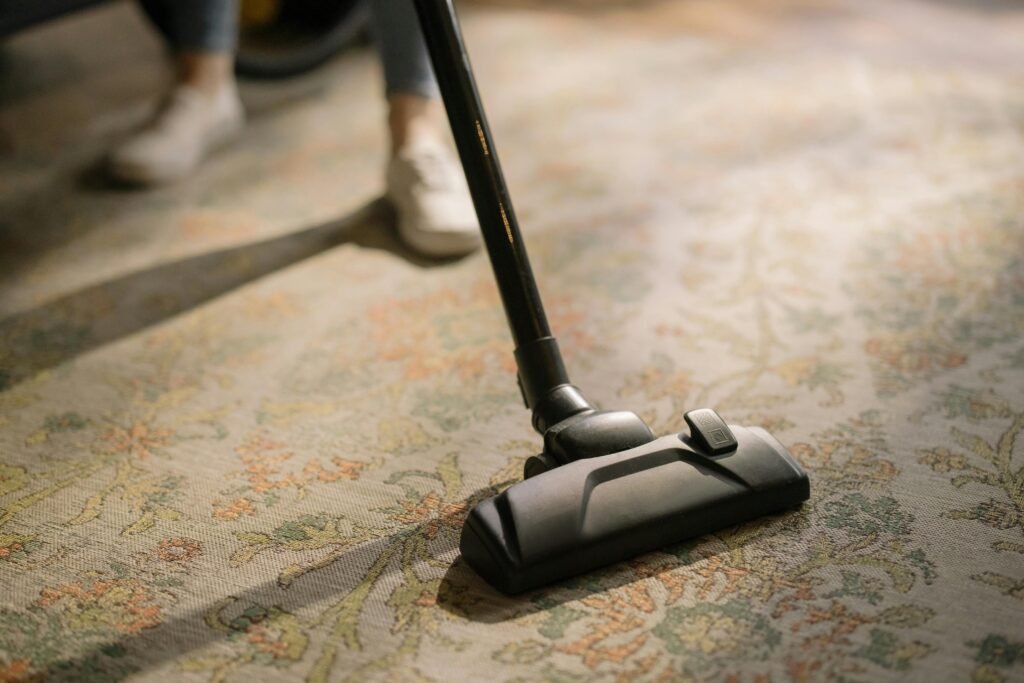
Vac-U-Form let kids mold thin sheets of plastic into their own toys using heat and suction. They could make cars, masks, or little trinkets, and it felt like running a mini factory. It was creative and fun for kids who liked hands-on projects.
The issue was, once again, safety. It involved a heating plate hot enough to cause burns, and melted plastic wasn’t the friendliest material. Parents started pushing back, and by the time the ’80s rolled in, safer craft kits replaced it. Vac-U-Form became another casualty of the era’s riskier toy experiments.
15. Romper Stompers
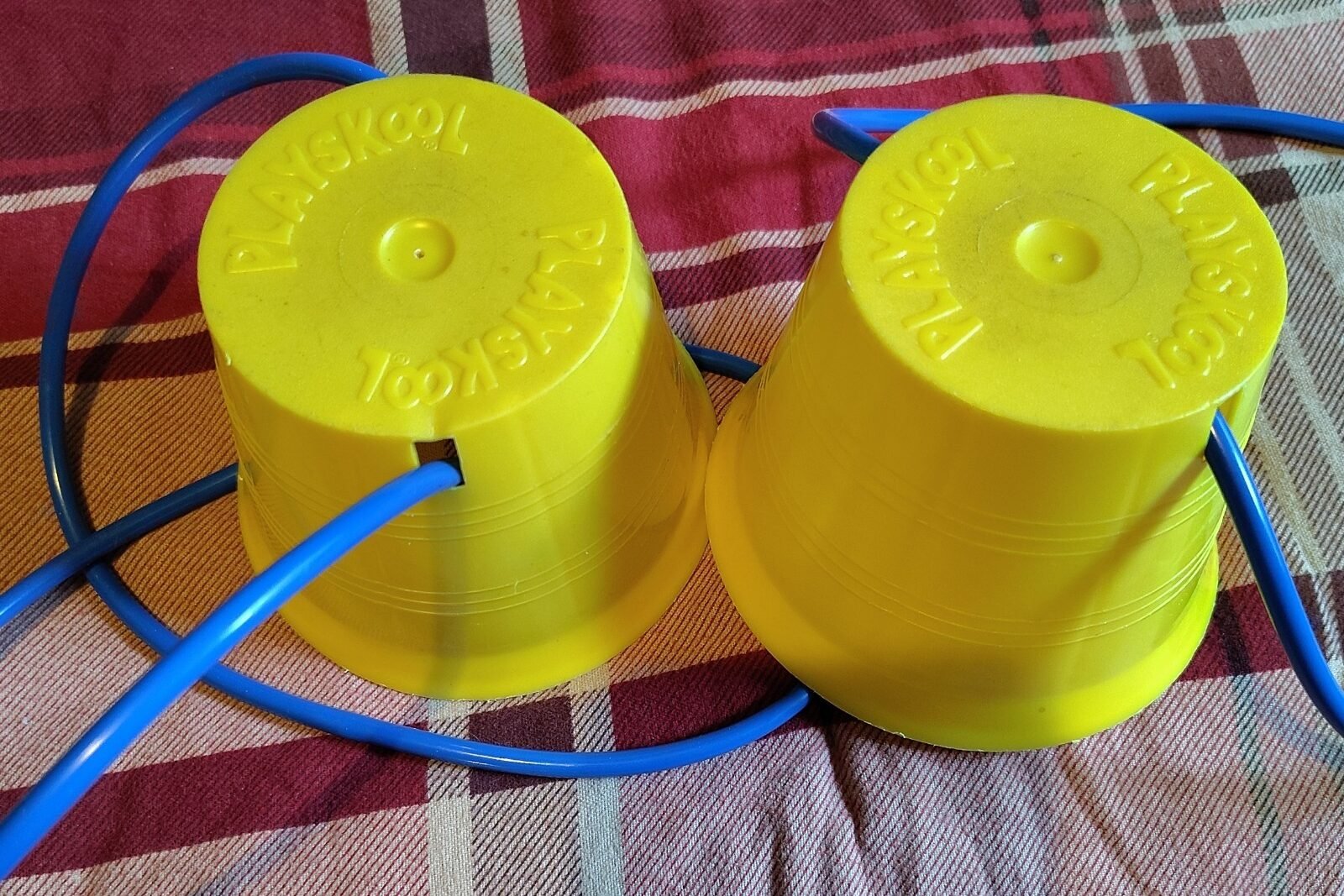
Romper Stompers were essentially plastic stilts with ropes attached for kids to walk on. They let children feel taller and clomp around the yard with a sense of power. Brightly colored and lightweight, they were simple but endlessly entertaining.
The problem was balance—kids fell off them constantly, leading to bruised knees and sprained ankles. Parents grew tired of patching up scraped elbows, and the toy’s appeal didn’t hold against newer, flashier trends. They eventually disappeared, remembered as one of those quirky little toys that made the ’70s so unique.

